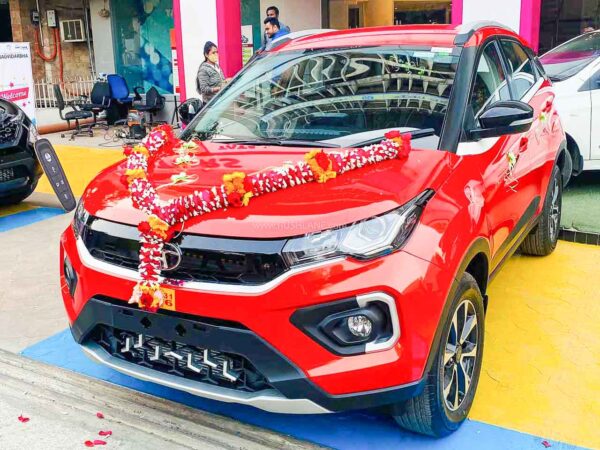Soft strategy – Tata Motors Treads Lightly with 0.6 percent Price Increase on Passenger Vehicles wef May 1, 2023

Tata Motors today announced an increase in the prices of its passenger vehicles starting from May 1, 2023. The company’s decision to marginally increase its vehicle prices comes with a weighted average increase of 0.6 percent. This depends on the variant and model.
It’s important to note that the Tata Cars Price Hike May 2023 may not be uniform across all models and variants. This soft strategy typically involves incremental price increases over time to gradually adjust their prices without causing alarm. Tata Motors offers Tiago, Tiago EV, Tigor, Tigor EV, Punch, Altroz, Nexon, Nexon EV, Harrier and Safari in their PV range.
Commodity Prices and Manufacturing Costs: The Impact on Automotive Pricing Strategies
Differentiating prices based on product portfolio and market demand is a standard practice. This lets automakers optimize their revenues and maintain a competitive edge in the market. Despite absorbing a significant portion of the increased costs, Tata Motors is compelled to pass on some proportion of these costs through the price hike due to the rise in overall input costs and regulatory changes.
The automotive industry operates in a highly competitive environment. Pricing strategies are driven by multiple factors. Such as frequent fluctuations in commodity prices like steel, aluminium, and rubber, which affect the manufacturing cost of vehicles. Additionally, the industry’s operational expenses, such as logistics, marketing, and labour, also impact the pricing strategy. Thus, to maintain profit margins and sustain their business, auto manufacturers periodically revise their vehicle prices.
The #DARK side of high-definition. Gets redefined. ?#DarkToTheMAX Coming soon.
?#TATANexonEV #NexonEVDark #NexonEV #Goev #TATA #ComingSoon pic.twitter.com/ZVKis8IDkT
— Tata Passenger Electric Mobility Limited (@Tatamotorsev) April 12, 2023
Electric Vehicles: The New Pricing Frontier in the Automotive Industry
Tata Motors’ decision to increase its vehicle prices is not unique to the company but is an industry-wide practice. Constant rise in costs puts pressure on margins, and automakers must continuously innovate and improve their products while keeping an eye on profitability. Therefore, they periodically review their pricing strategies to ensure that they remain competitive while maintaining a profit margin.
In recent years, the automotive industry has witnessed a surge in the adoption of electric vehicles. This shift towards electric vehicles has also impacted the pricing strategy of traditional automakers. With the rise of electric vehicles, automakers are investing heavily in research and development to stay competitive in the market. This has resulted in an increase in the cost of manufacturing electric vehicles, leading to higher pricing for customers. Tata Motors is getting ready to launch Nexon EV Max Dark in the coming days.
The Future of Automotive Pricing: Navigating a Changing Landscape
Rising input costs and changing regulations have been the primary drivers behind price hikes. But it also puts focus on the need for auto manufacturers to continuously innovate and improve their products while maintaining profitability.
As the industry continues to evolve, with the rise of electric vehicles and changing consumer preferences, automakers must find new ways to stay competitive and relative. This requires a willingness to adapt to new technologies and business models, while keeping a close eye on market trends and consumer demand.

